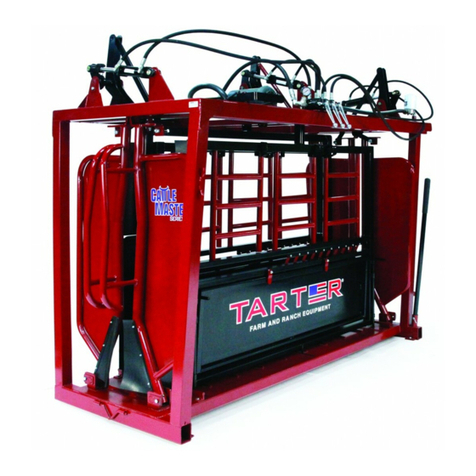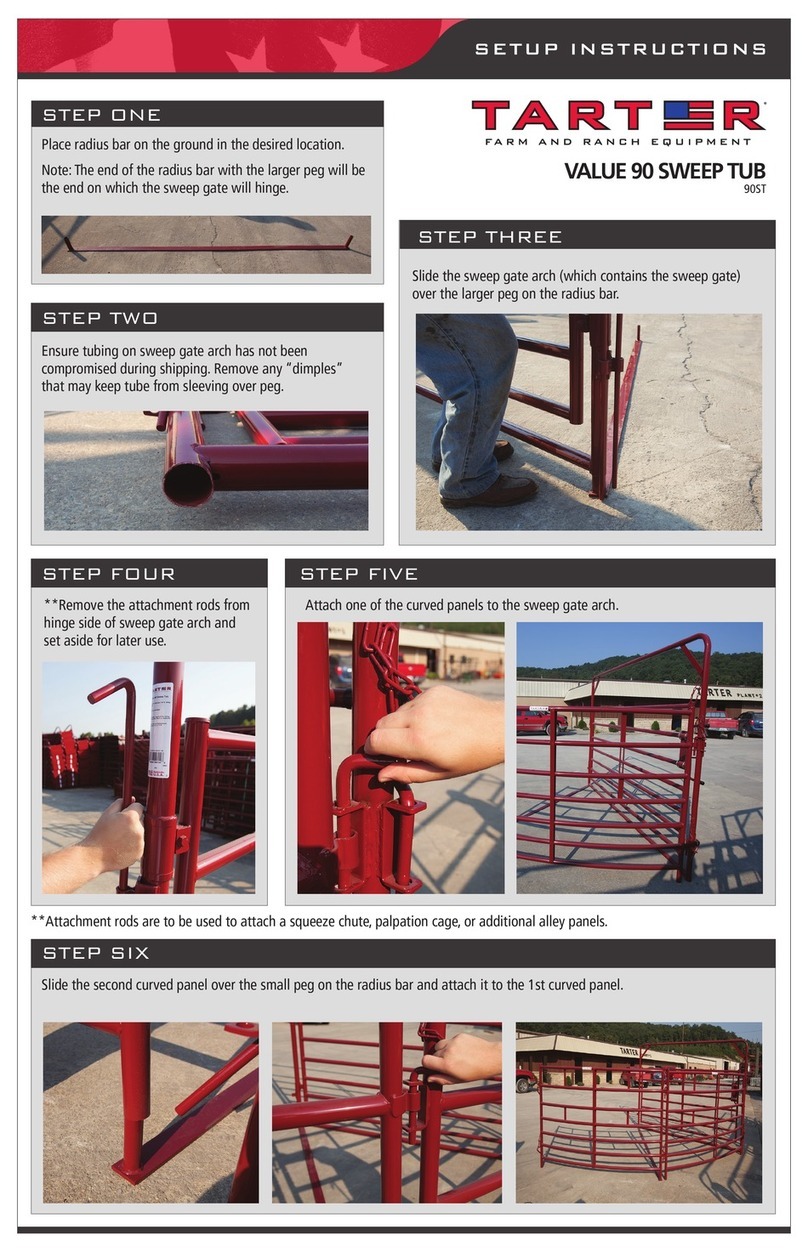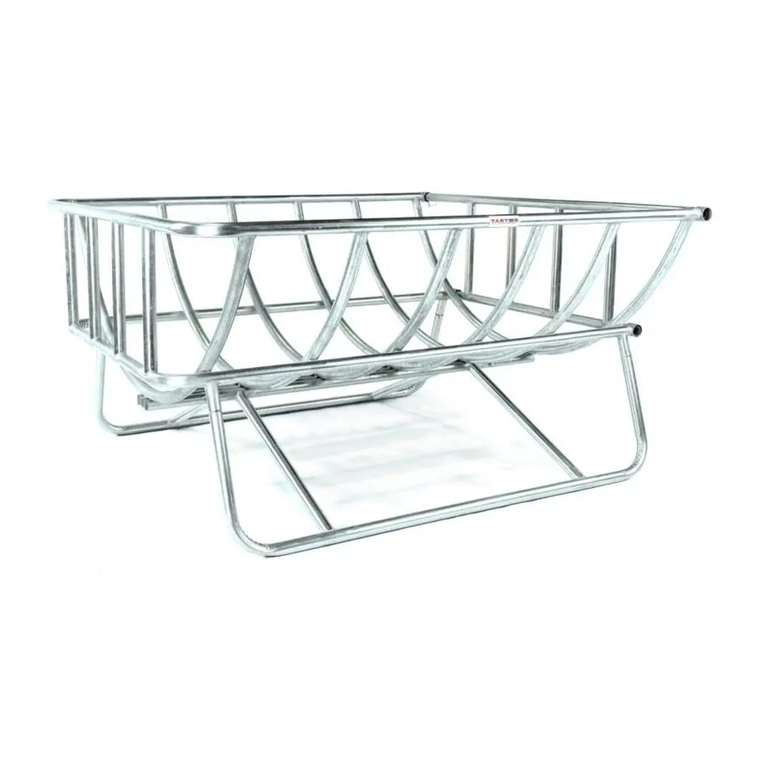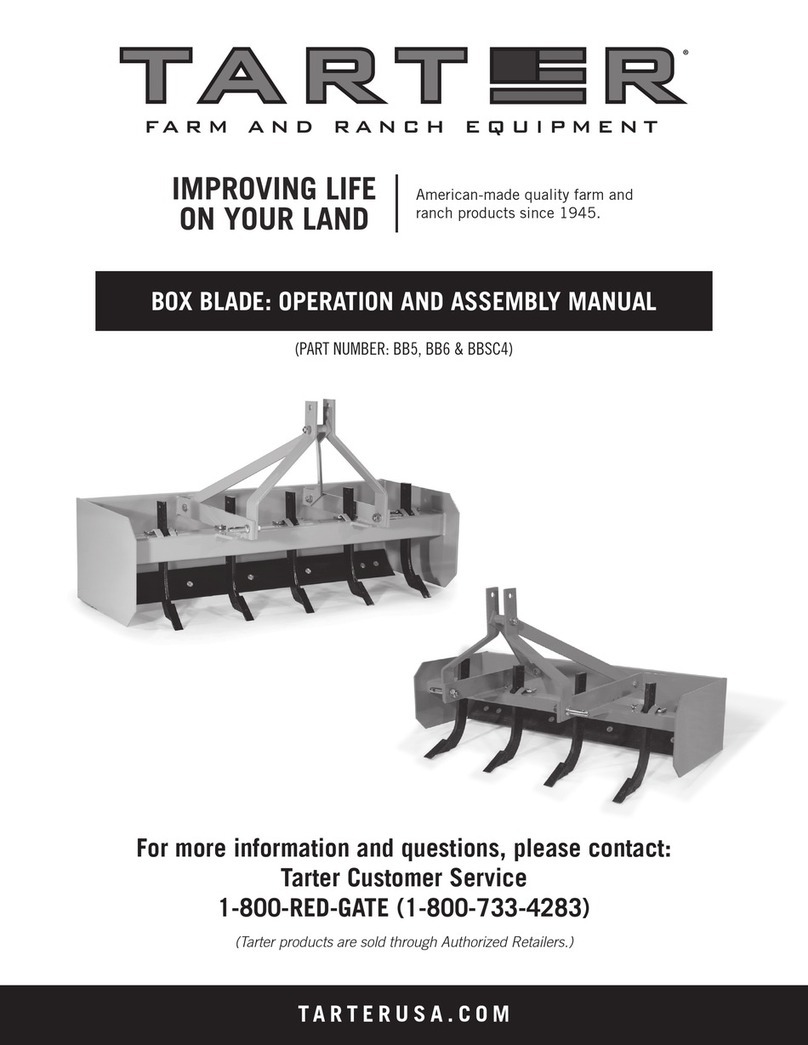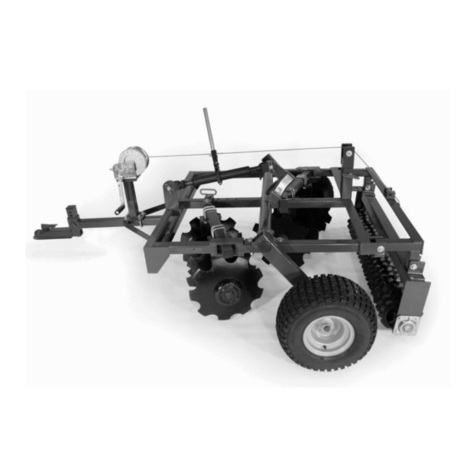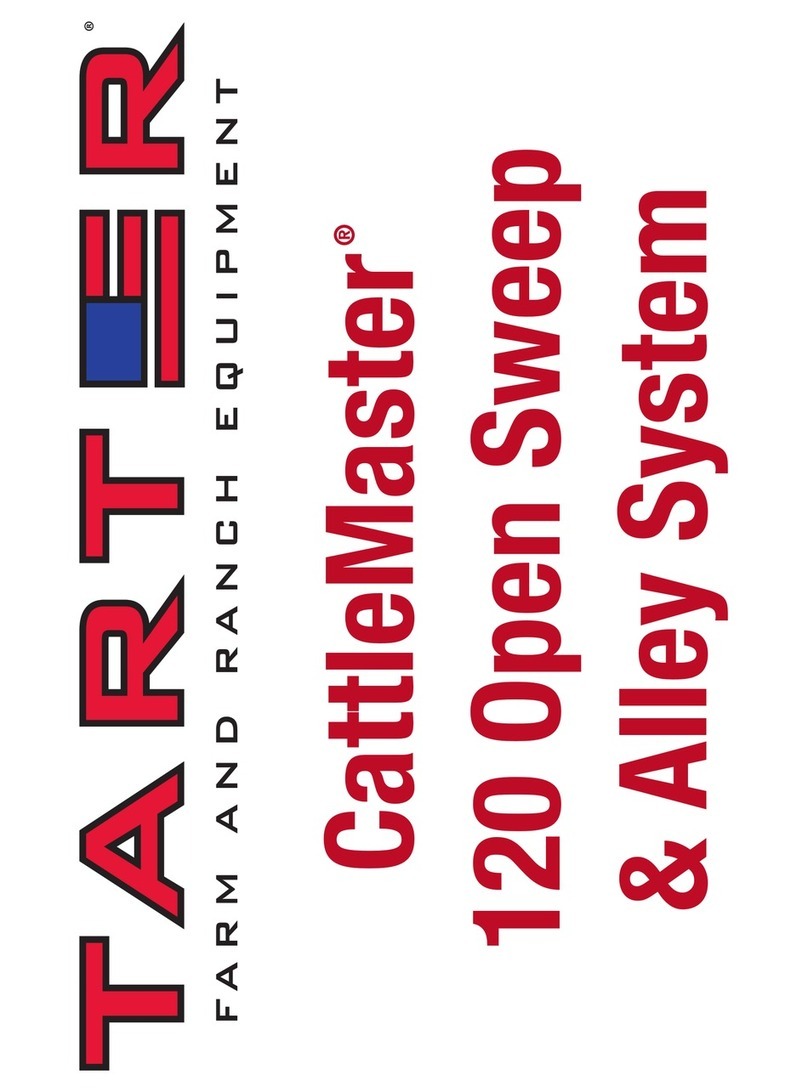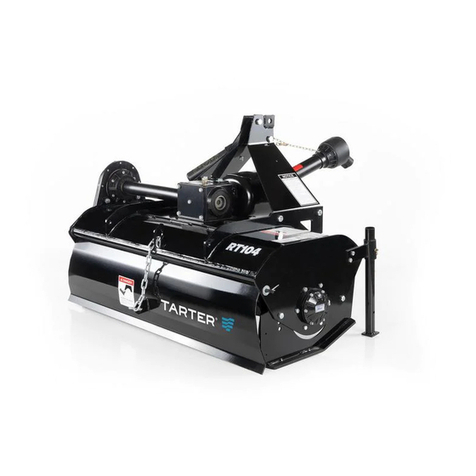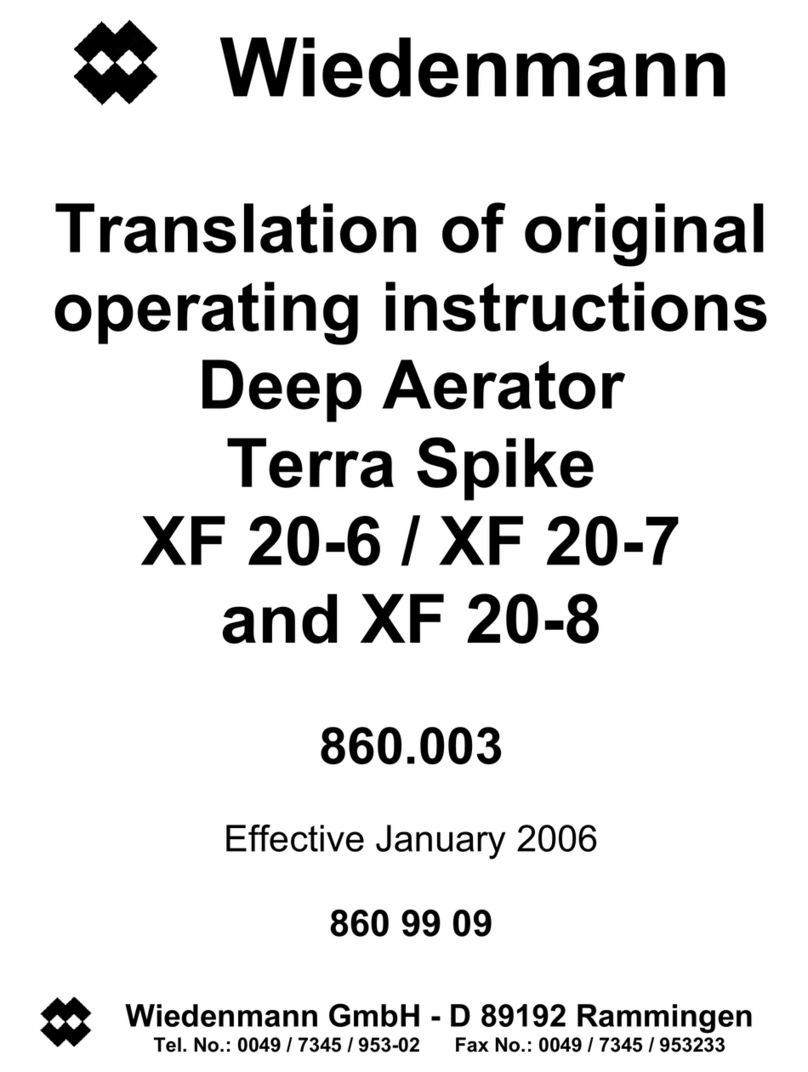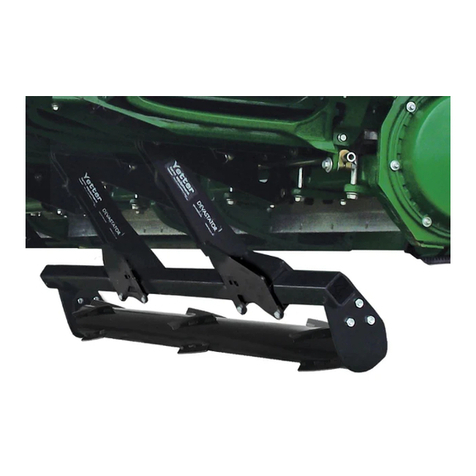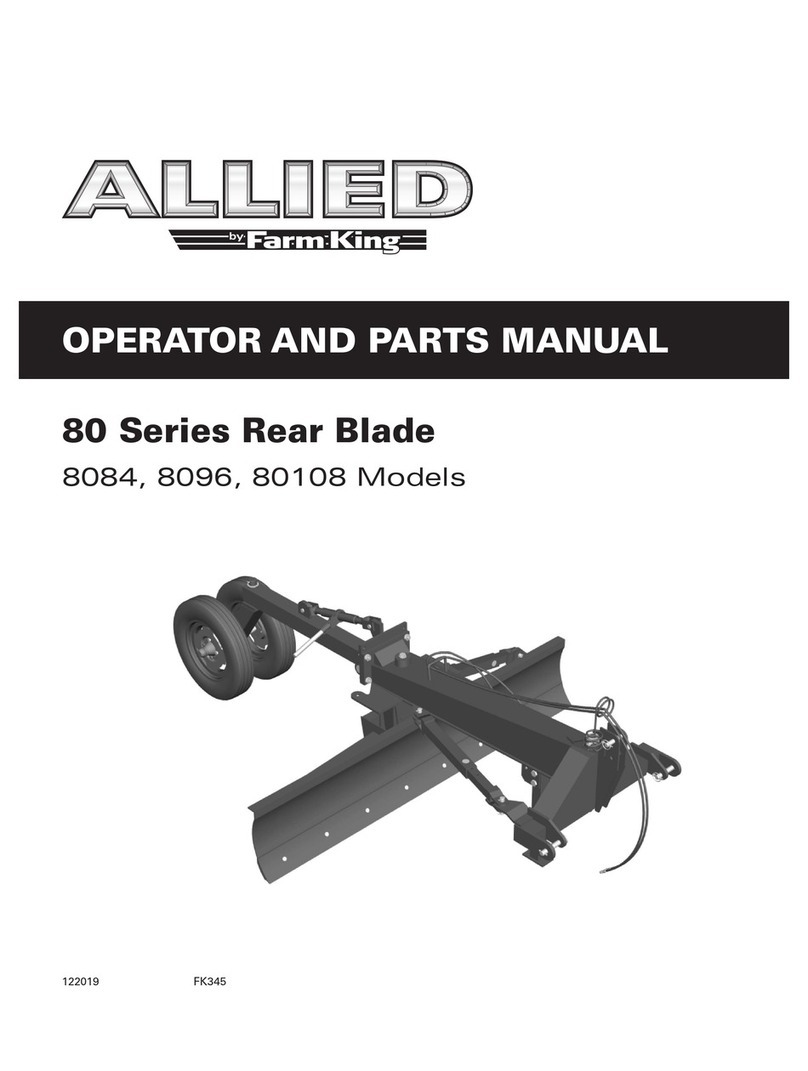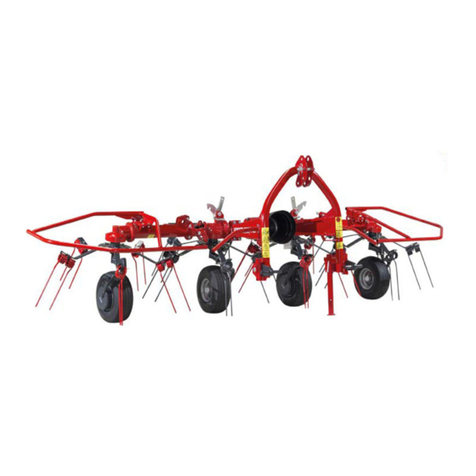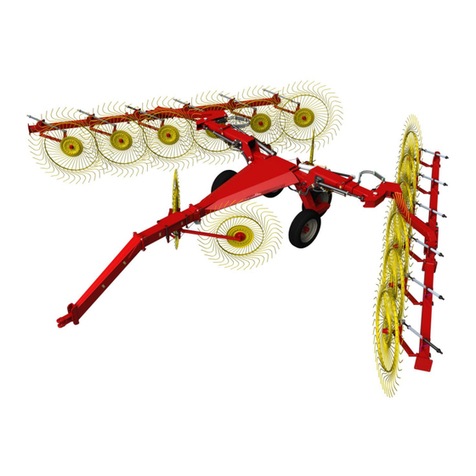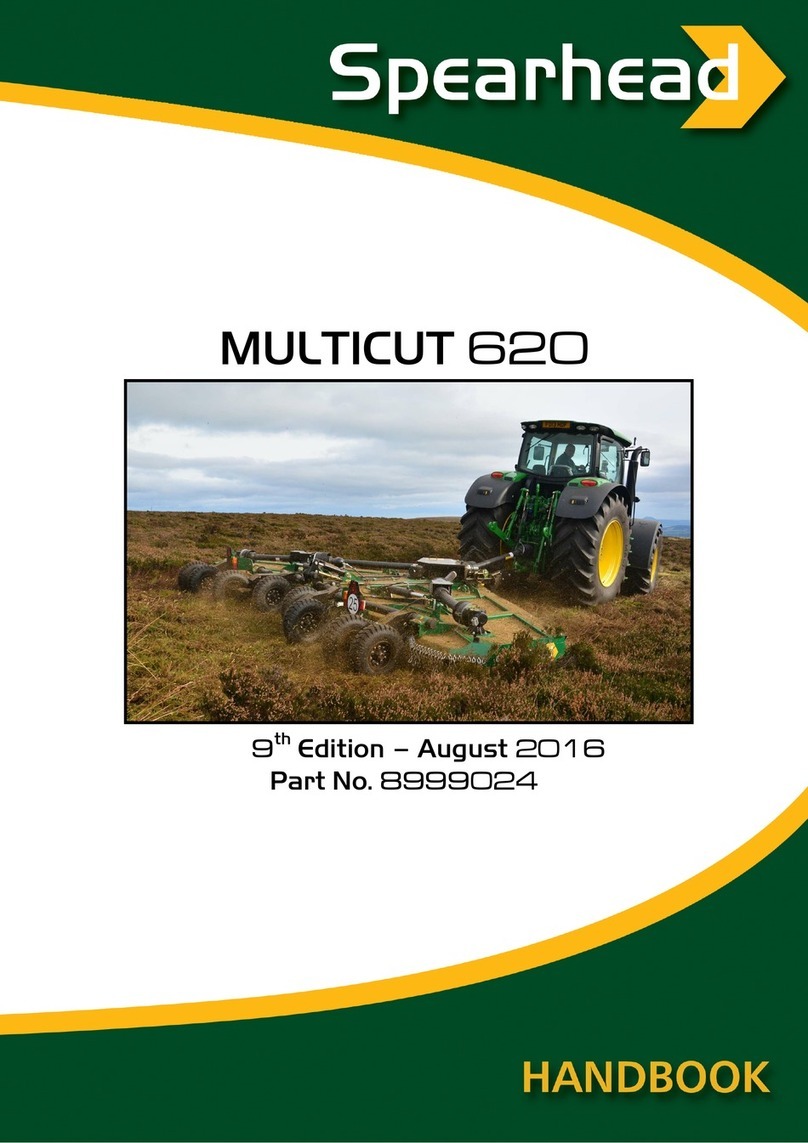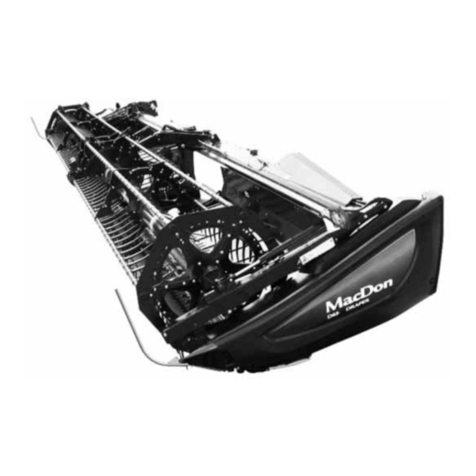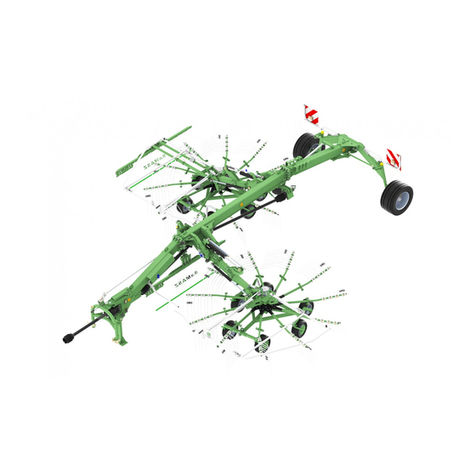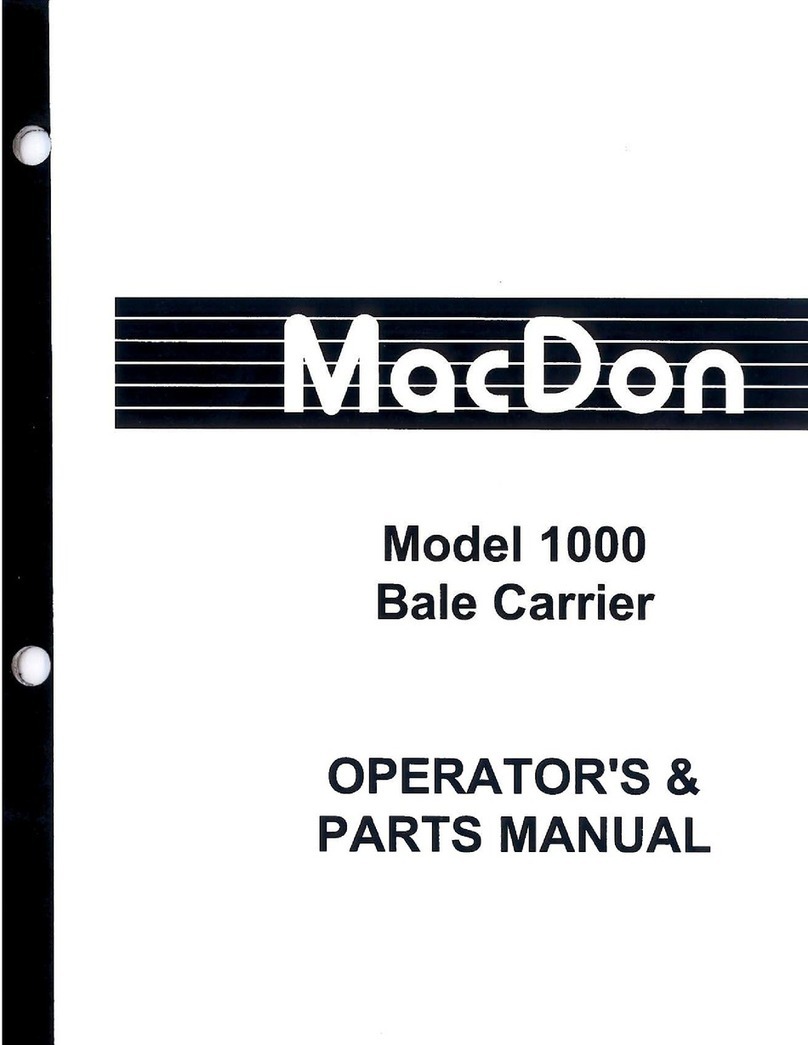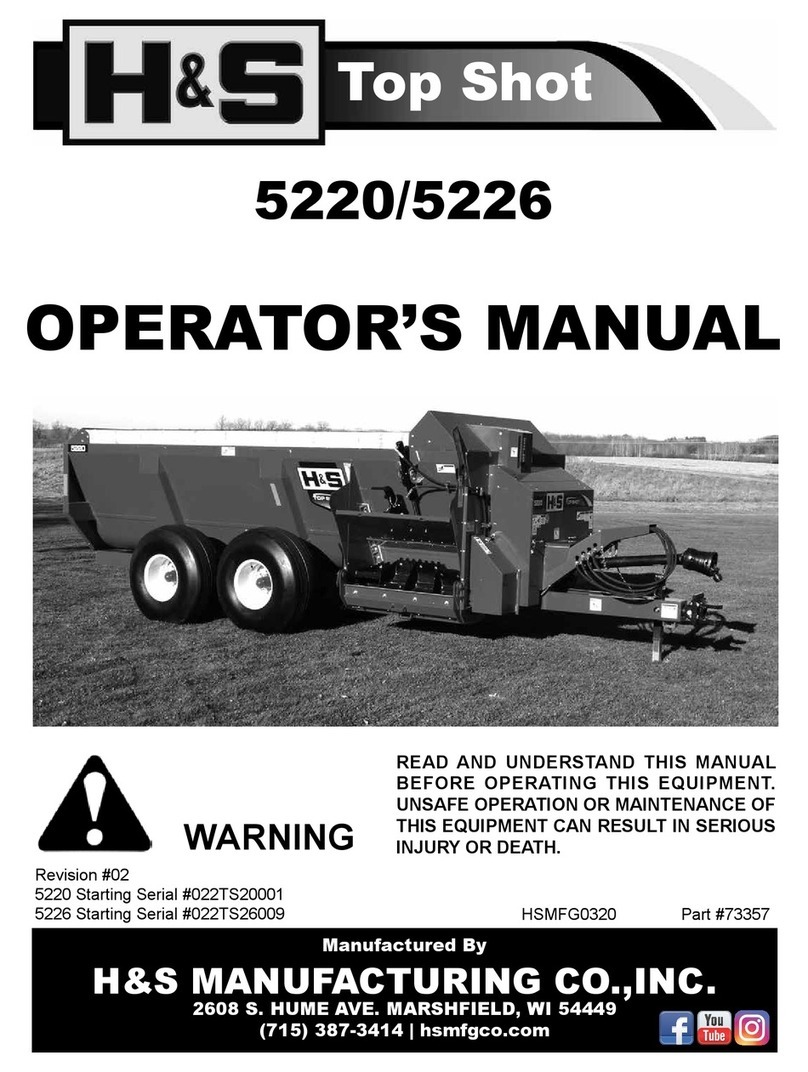
8
SAFETY
SAFETY GUIDELINES
At Tarter, we care about your safety. Most accidents
can be avoided by a few seconds of thought and a
careful approach to handling equipment. You, the
operator, can avoid many accidents by observing the
following precautions and insist those working with
you follow them too.
If you need assistance or a replacement manual and
safety decals, go to Tarterusa.com or call 1-800-RED-
GATE.
PLEASE READ YOUR TRACTORAUVUTV POWER
UNIT MANUAL BEFORE ASSEMBLING OR
OPERATING YOUR TARTER IMPLEMENT.
In order to provide a better view, certain photographs
or illustrations in this manual may show an assembly
with a safety shield removed. However, a Tarter
implement should never be operated in this condition.
Keep all shields in place. If shield removal becomes
necessary for repairs, replace the shield prior to use.
Replace any safety decal that is illegible or missing.
Location of such safety decals are indicated in this
manual.
Never use alcoholic beverages or drugs that can
hinder alertness or coordination while operating the
power unit or the Tarter implement. Consult your
doctor about operating this machine while taking
prescription medications.
Under no circumstances should children under the
age of 18 be allowed to operate the power unit or the
Tarter implement. Do not allow persons to operate
or assemble the Tarter implement until they have
read this manual and have developed a thorough
understanding of the safety precautions and how it
works. Review the safety instructions with all users
annually.
This Tarter implement can be dangerous to children
and persons unfamiliar with its operation. The
operator should be a responsible, properly trained and
physically able person familiar with farm machinery
and trained in this Tarter implement’s operations.
Always use a power unit equipped with a Roll Over
Protective System and seat belts(ROPS). Keep your
seat belt securely fastened because falling off can
result in your death from being run over or crushed.
Always keep a foldable ROPS system in the “locked
up” position at all times.
Never exceed the limits of any piece of machinery,
whether the power unit of the Tarter implement. If its
ability to perform a job safely is in question DO NOT
TRY IT.
Do not modify the Tarter implement in any way.
Unauthorized modification could result in serious
injury or death and may impair the function and life of
the implement.
In addition to the design of this implement, including
safety signs and safety equipment, hazard control
and accident prevention are dependent upon the
awareness, concern, prudence, and proper training
of personnel involved in the operation, transport,
maintenance and storage of the Tarter implement.
Refer also to safety messages and operation
instruction in each of the appropriate sections of the
power unit and Tarter implement manuals. Heed the
safety signs affixed to both the power unit and Tarter
implement.
Follow all safety rules and safety decal information.
Your Tarter implement is attached to a power unit.
You must know the controls of your power unit and
how to stop the engine and implement quickly in an
emergency. All operators must be capable to safely
operate the power unit, its attachments, and all
controls.
PREPARATION
Always wear relatively tight and belted clothing to
avoid getting caught in any moving part. Wear sturdy,
rough-soled work shoes and protective equipment for
eyes, hair, hands, ears, and head. Wear respirator or
filter mask when appropriate.
DANGER: Failure to follow instructions or
safety rules can result in serious injury or
death.
DANGER: DO NOT allow anyone to operate
the power unit or the Tarter implement
without proper instruction.





















